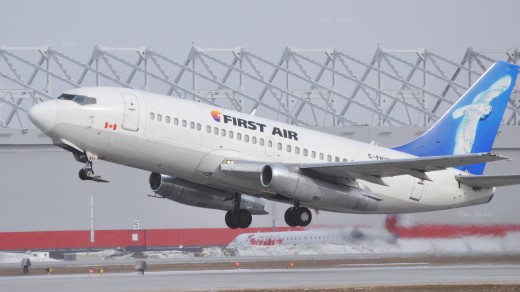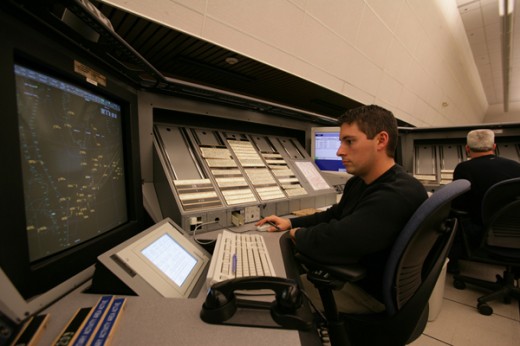
Scroll Down to see all of this week’s updates
Billy Bishop Expansion Takes Next Step
Toronto City Council’s executive committee has voted 11-1 in favour of going ahead with negotiations that could result allowing modern jet airliners to use Billy Bishop Toronto City Centre Airport.
After nine hours of public presentations on Tuesday, the committee’s decision takes the proposal to extend the runway at Billy Bishop by 168 metres at each end to accommodate Bombardier CS100 jet airliners that have been conditionally ordered by Porter Airlines.
The Toronto Port Authority banned jets from the facility in 1983 to quell noise in the downtown area but the expansion proposal includes an exemption for the CSeries jets on the grounds that the Pratt and Whitney PurePower geared turbofan engines are so quiet that the noise concerns don’t apply.
Porter says the jets will allow it to expand its routes to major cities deep in the U.S. and as far west as Vancouver offering customers the downtown convenience it has become known for with its Q400 service with a much broader reach.
Porter CEO Robert Deluce told Toronto media Tuesday the executive committee’s decision is good for the whole city. “We’re pleased,” he said “Getting the boat out of council today and having it go forward on a very definitive path is good news for all of us.”
The expansion is far from a done deal, however. City staff have argued against moving quickly with the proposed expansion citing a lack of information on environmental issues and the impact on downtown infrastructure, particularly the already-abysmal traffic congestion. Any future recommendation of the executive committee would have to be approved by council as a whole, which has among its 44 members strident opponents of the plan. Both leading contenders to unseat controversial Mayor Rob Ford (who supports the expansion), Olivia Chow and John Tory, oppose the expansion.
The executive committee heard from more than 100 presenters at the special open meeting and several brought up the future of general aviation at the field. Under the current operating agreement, general aviation access is guaranteed and city staff said repeatedly that their recommendations wouldn’t change that. However, some GA supporters told the meeting that the increased airline traffic has increased pressure on GA and fewer aircraft are based there.
Last year, some private aircraft owners claimed Porter was hiking tie-down and hangar rents excessively and their complaints led to a lawsuit being launched by the Toronto Island Pilots Association against the Port Authority alleging a lack of oversight in upholding GA rights a the field. Dassault has upped the ante in its upstart bid to supply the RCAF’s new fighter aircraft.
Cockpit Confusion Preceded First Air Crash

The Transportation Safety Board says the first officer of First Air Flight 6560 twice suggested his captain abort a landing at Resolute Airport but his increasingly tense pleading was either ignored or misunderstood by the flying pilot.
A few seconds after the cockpit voice recorder recorded the FO calling the captain by name and saying “I don’t like this” the Boeing 737-201 hit a hill about two km. east of the midpoint of the runway the flying pilot thought he was on approach to. All four crew and eight of 11 passengers were killed as the airliner split into three pieces and caught fire.
The TSB said compasses that were out by 17 degrees and an incorrectly set autopilot caused the initial confusion leading to the crash but focused much of its report on the growing disconnect between the two pilots as the approach deteriorated.
The FO seemed to have a good handle on the circumstances and expressed doubts early in the approach. But the TSB said the captain either didn’t grasp the seriousness of the FO’s comment or disagreed with him and pressed an approach that was well to the right of the runway centreline.
“There was a number of exchanges between the two pilots in a span of a minute and 20 seconds or so, but part and parcel to that exchange was there was no concrete suggestion or direction from the co-pilot about a go-around,” Brian MacDonald, the lead investigator into the crash, said at a news conference Tuesday.
The TSB said First Air didn’t properly train its pilots in crew resource management and that may have caused the FO to hold back in his interaction with the captain on this flight.
“The first officer made many attempts to communicate his concerns and suggest a go-around…. The suggestion was not sufficiently assertive at a time when an escalation of communication was needed, and did not convince the captain to discontinue the approach,” the investigation found.
“In the absence of clear policies or procedures allowing a first officer to take control, this first officer likely felt inhibited from doing so.”
First Air says it has revamped training and added better navigation gear in response to the crash.
“When you have something like this happen, you take a hard look in the mirror and put your whole operation under a microscope,” Chris Ferris, First Air’s executive vice president told CBC News North. “We have taken definite lessons from this accident. It’s something none of us want to go through again.”
Ukraine Crisis Stalls Q400 Russia Deal

The crisis over Russia’s annexation of Crimea has put a damper on negotiations between Bombardier and a Russian company to assemble Q400s in Russia.
Under the deal with Rostec, a Russian state corporation, about 100 Q400s would be built for the Russian market, which is rapidly modernizing its fleet by replacing Soviet-era aircraft.
International tensions and tit-for-tat sanctions being traded between Russia and many Western countries have thrown a wrench into the process but Guy Hachey, head of Bombardier’s aerospace division, said the deal may still go through.
“With the Ukraine and everything that’s happening there, it’s softened up a little bit the discussions but our partner is still very eager to make that happen,” Hachey told an investor conference in March.
Sanctions in place or contemplated at the time didn’t seem to directly impact the $3.4 billion deal but more fallout is expected from the Crimean situation.
Cirrus Flies Type Conforming Vision Jet

Cirrus Aircraft flew the first certification test article of its Vision SF50 personal jet on March 24 and said it went smoothly.
The company has been flying a prototype version of the aircraft since 2008 but the new aircraft incorporates the lessons learned in the past five years. It’s one of three certification test aircraft that will be built from the same drawings and using the same tools and processes that will be used in the manufacture of the jet.
The aircraft flew as expected on its one-hour hop according to Cirrus test pilot Mike Stevens. “The Vision Jet handled and performed very well and all systems functioned properly, just what you want in a first flight,” he said.
The aircraft is designed to be a step up for Cirrus SR22 owners looking for more speed and longer range. It will also be the first certified jet with an onboard parachute for emergency use. It seats five adults and two kids.
The plane will sell for about $2 million and there are 550 firm orders. First deliveries are expected by the end of 2015.
NavCanada Partner in Ocean ‘Radar’ System

Innovation by NavCanada could help prevent recurrence of the mystery surrounding the loss of Malaysia Airlines MH370.
The nation’s air services provider has struck a deal with Aireon, a satellite company, to attach receivers on 66 satellites that will pick up aircraft transponders.
That will allow Nav Canada to have a radar-like picture of the location of transponder-equipped aircraft where there is no radar coverage, like over the ocean.
As Aireon’s first customer, NavCanada will initially deploy the service over the millions of square miles of ocean for which it is responsible for air traffic services. But NavCanada is also a partner in the joint venture and will be involved in its deployment worldwide.
“Aireon plans a public-private partnership. With the support of government users, it will invest private capital, industry expertise, and will build out an infrastructure that can be used by air traffic control organizations around the globe to provide a public good, ” said Aireon CEO Don Thoma.

